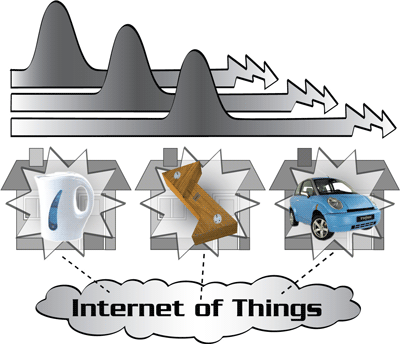by Lennart E. Fahlén
The combination of ambient/ubiquitous interface technology and Internet-based energy load-balancing tools with a consumer focus, holds promise for increased energy savings and control.
Informed consumers save energy
Incentives to be energy-aware are increasing on many levels: economical, social, political and environmental. We know that consumers want to save energy if they can, and studies show savings between 5-15% can be achieved simply by providing direct feedback. However, when it comes to managing energy usage in the household, todays consumers are pretty much left to find their own solutions, such as reading electricity meters and using timers to switch equipment on and off. To address this, the new concept of the Internet of Things provides promising ways to integrate the control of energy into everyday life without the need for drastic lifestyle changes. Computer technology makes it possible to transform complex information into a more accessible form, resulting in improved consumer energy awareness and control and assisting consumers in reducing energy usage.
The load-balancing mechanism
Shifting electricity usage (by time and space) is a desirable goal for many energy-saving initiatives. A further goal is to explore the possibilities inherent in aggregating energy usage into cooperating pools for load-balancing purposes. Pooling usage and reducing peak loads allows an aggregation of use with the potential, for instance, to negotiate lower average rates (possibly offset by higher peak load rates at the margin).

Consider this scenario. A number of appliances within a physical area (homes, apartments, parking lots etc) are connected together. By having an agreement not to exceed a determined maximal energy usage at different times throughout the day, the peak levels and the cost of energy can be optimized. The charging units (or rather the users mediated through the units) negotiate in order to find a suitable timing slot in which to start charging. If for some reason the allocated slot is unsuitable, it is possible to enter a state of manual negotiation or an auction. An appliance in this context could be a variety of things, ranging from various kitchen utensils, through heating devices, to electrical vehicle chargers.
A simple load-balancing system for pooling usage across several units/users could work in the following way. First, a micro-controller controls the hardware modules inside the appliance (force feedback module, current-measuring module, power switch, ID mechanism, GPS etc) and communicates with a charging booking service over the Internet. The booking service is connected to a range of charging appliances, and monitors their current and predicted future power usage. The booking service in turn reports to a pooling service, which supervises the activity over many charging units. The pooling service is thus able to construct an aggregated profile of the near-future power usage of connected units. This profile is then continuously communicated back to the booking services, and finally the individual units.
The profile may be biased by any changes in the power suppliers cost/allowance levels and/or by maximum power usage limits, which may be stipulated in contracts between the power supplier and the subscribers/users of the pooled units.
To the user, the load-balancing mechanism appears as an ambient and physical interface that fits unobtrusively into the everyday surroundings. Without requiring an understanding of complex visualizations and convoluted interactions, the user is made aware of the current and predicted state of the energy consumption in comparison with other subscribers. Furthermore, the user is able to control and negotiate this consumption together with fellow consumers in a socially aware context.
Tea kettle and power strip
Prototypes and demonstrators of the concepts outlined above have already been built and successfully demonstrated. One prototype consisted of tea kettles, where users were able via force feedback means to schedule the boiling of water. Another prototype took the form of a power strip, where control and scheduling was guided by tactile and positional means, and by the use of sound, vibration and visual indications. For low-level control and distribution, the PART middleware system was used.
This work was sponsored by The Swedish Energy Agencys Energy IT and Design program.
Please contact:
Lennart E. Fahlén
SICS, Sweden
Tel: +46 8 633 15 39
E-mail: lef![]() sics.se
sics.se










